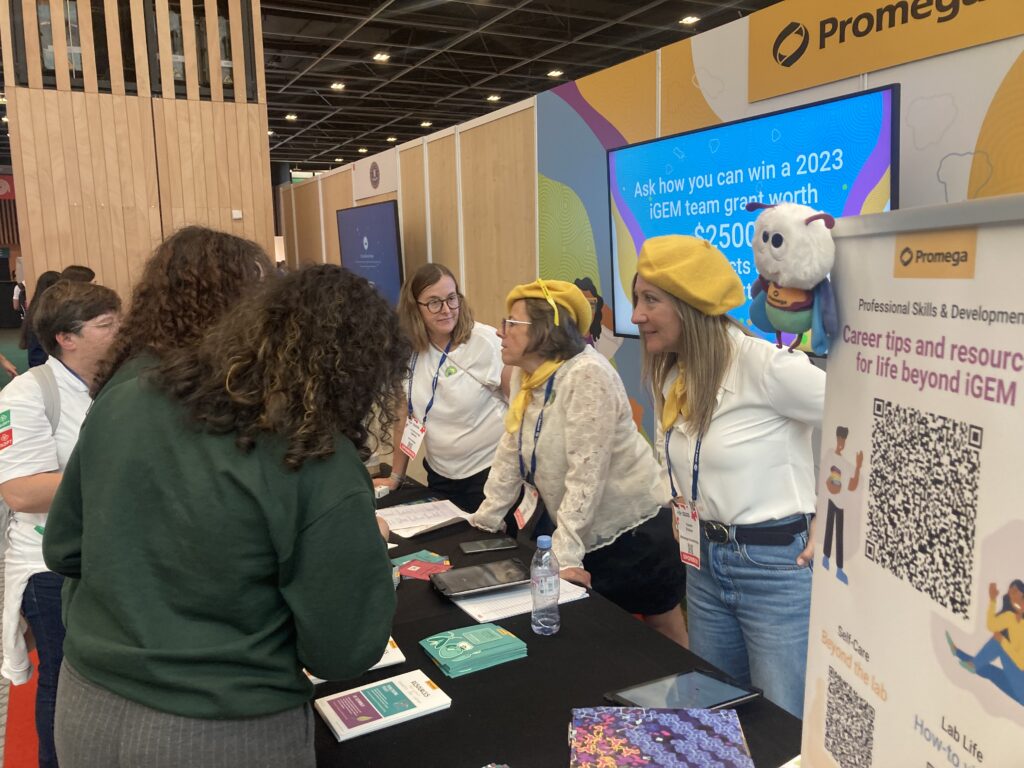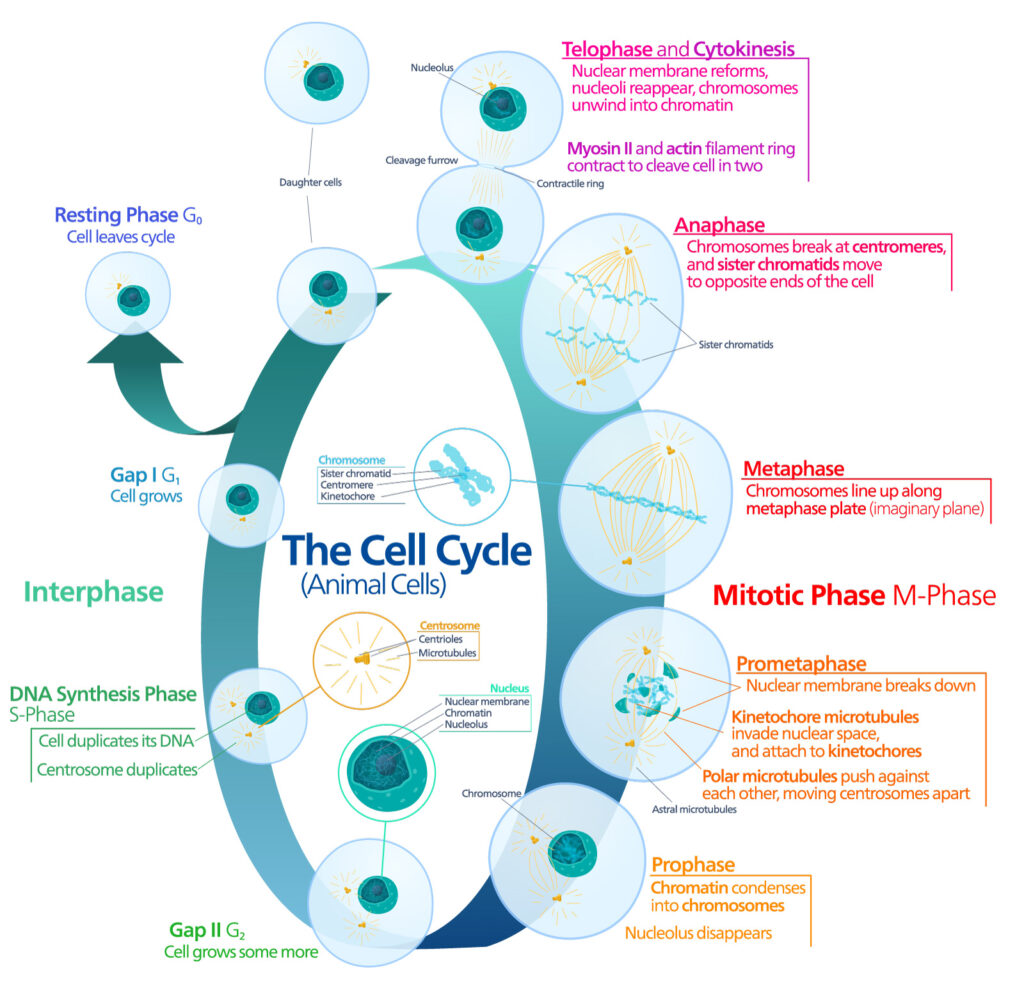In 2022, our bloggers wrote on topics ranging from monkeypox outbreaks to cultured meat in biotech labs to preventing the next pandemic. Our top three most-viewed blog posts this year have the commonality of Promega products helping to advance important research in different fields and push science a step forward in the world. Take a look at Promega’s top three most-viewed blog posts of 2022.
Continue reading “Our Top Three Most-Viewed Blog Posts of 2022”Growing Our Understanding of Rose Rosette Virus Through Reverse Genetics

Roses, the universal symbol of love and affection, are one of the most popular ornamental flowering shrubs used by landscapers and home gardeners and account for almost half of the billion-dollar ornamental plant market. The growing prevalence of rose rosette disease poses a significant threat to these industries. This lethal disease is caused by the Rose rosette emaravirus (RRV) and transmitted by the tiny eriophyid mite, Phyllocoptes fructiphilus. Infection by RRV results in prolific growth of clustered and bunched plant shoots (witches’ broom), malformed flowers and leaves, malformed shoots and enlarged stems and abundant leaf growth and thorniness. This excessive growth depletes the plant’s energy, eventually causing death.
Emerging and Devastating Plant Viruses of the Genus Emaravirus
RRV is a single-stranded, segmented, negative-sense RNA virus belonging to the genus Emaravirus, a relatively new genus that was established in 2012. These emerging viruses can be devastating to trees, herbaceous woody plants and vines. At Texas A&M University, Dr. Jeanmarie Verchot’s lab is working to better characterize and understand these new viruses. In addition to threatening roses, these viruses cause damage to important agriculture crops such as wheat and pigeon peas. They also endanger sensitive ecosystems when they infect plants specialized to a particular habitat, as is the case with Palo verde broom virus infection of palo verde trees of the Sonoran Desert (1).
Continue reading “Growing Our Understanding of Rose Rosette Virus Through Reverse Genetics”From Student Debt Assistance to Family-Forming Support: Benefits and Well-Being Go Hand in Hand
You know this, but it bears repeating. Prioritizing physical, psychological, emotional and financial wellness is key to supporting our overall well-being. This holds true during the busy holiday season and throughout the entire year.

It can also be easier said than done, so we need as much support as possible in this vital endeavor. An in-depth framework recently published by the US Surgeon General outlines a vision of the workplace as an engine of well-being. The report states, “Our workplaces play a significant role in our lives. Work affects both our physical and mental well-being – in good ways and bad. The COVID-19 pandemic brought the relationship between work and well-being into clearer focus.”
Continue reading “From Student Debt Assistance to Family-Forming Support: Benefits and Well-Being Go Hand in Hand “Recapping the 2022 iGEM Grand Jamboree
On October 26, hundreds of young scientists made their way through Paris to convene at the Paris Expo Porte de Versailles for the world’s largest synthetic biology competition. The iGEM Grand Jamboree showcases student projects from around the world that tackle real-world challenges such as nutrition, diagnostics and climate change.
Each year, ten Promega iGEM Grant winners receive $2,500 in free Promega products to support their research. Many Promega branch offices also provide support to teams within their region. In total, 36 iGEM teams were supported by Promega during the 2022 competition.

Six representatives from Promega Madison, France and Germany attended the Jamboree. We met so many incredible scientists and had countless conversations about the exciting future of synthetic biology. At the Closing Ceremonies, we were thrilled to see many of our sponsored teams take home gold medals, trophies, and even the coveted BioBrick Trophy.
Continue reading “Recapping the 2022 iGEM Grand Jamboree”The Crows Have Ideas

It has become increasingly evident to scientists that the intellectual prowess of your average crow has been roundly underestimated. With remarkable skills including superior social acumen, analogical thinking and the ability to craft and use tools, crows seem to prove themselves more and more clever with every investigation into the inner workings of their small, but mighty, brains.
Recently, new research revealed that crows may be capable of recursive thinking. Recursion can be described as the process of defining something in terms of itself. Humans use recursion in mathematics and language, and it’s a hallmark feature of advanced linguistic ability, as originally posited by Noam Chomsky in his hierarchy of grammars. Recursion in language is used to grow the complexity of sentence structure to contain, in theory, an infinite number of embedded elements or ideas. Put simply, linguistic recursion refers to the nesting of one grammatical structure, this sentence for example, within another of the same kind. Formerly thought to be a skill exclusive to primates, research like that recently published in Science Advances has challenged this assumption.
Continue reading “The Crows Have Ideas”The 33rd International Symposium on Human Identification: The Past, Present and Future of Investigative Genetic Genealogy
It’s hard to imagine a better way to celebrate the 33rd International Symposium of Human Identification than a night spent wandering through the Hall of Human Evolution at the Smithsonian Museum of Natural History. The meeting, which took place in Washington D.C. from October 31–November 4, focused largely on using investigative genetic genealogy (IGG). When used to identify human remains or solve cold cases, IGG (a.k.a. forensic genetic genealogy or forensic investigative genetic genealogy, take your pick) relies heavily on techniques developed to sequence DNA from ancient human remains.

New to ISHI this year were live-streamed presentations, building off the success of last year’s session recordings for online streaming. Another first was attendees dressing up in costume for the welcome reception, which happened to coincide with Halloween. From a nucleic acid-themed group costume to Sims characters to a bunch of grapes, ISHI 33 attendees had a chance to show off their fun side while reconnecting with colleagues.
While a range of topics were covered during the workshops, sessions and poster presentations, three themes stood out to this first-time ISHI attendee. In addition to IGG, there was widespread interest in developments in DNA databases as well as efforts to mobilize DNA analysis labs.
Continue reading “The 33rd International Symposium on Human Identification: The Past, Present and Future of Investigative Genetic Genealogy”Cellular Senescence and Cancer Therapy: Overcoming Immortality?
At the time of writing this post, no scientist had yet discovered the secret to immortality. In our world, we’ve come to accept that living things are born, grow old and die—the circle of life.
And yet, for many years, life scientists believed that the circle of life did not apply to our constituent cells when cultured in a laboratory. That is, cultured normal human cells were immortal, and they would continue to grow and proliferate forever, as long as they were provided with the necessary nutrients.

Pioneering work published in 1961 by Leonard Hayflick and Paul Moorhead challenged that theory (reviewed in 1). Their research showed that normal cells in culture have a finite capacity to replicate. After they reach a certain number of replicative cycles, cells stop dividing. Hayflick and Moorhead made the important distinction between normal human cells and cultured cancer cells, which are truly immortal. In later years, the limit to the number of replicative cycles normal human cells can undergo became known as the Hayflick limit. Although some scientists still express skepticism about these findings, the Hayflick limit is widely recognized as a fundamental principle of cell biology.
Continue reading “Cellular Senescence and Cancer Therapy: Overcoming Immortality?”What’s New with Promega Resources?
Whether you’re looking to learn about nucleic acid analysis, wondering how to do an ELISA assay, or simply have ten minutes to kill in your day, Promega resources have you covered! We’ve revamped and upgraded our hub of self-service resources so we can provide the most up-to-date scientific support. Here are some highlights of what’s new:

Disease Dynamics and Wastewater Surveillance in the Las Vegas Desert

Wastewater surveillance, or wastewater-based epidemiology (WBE), is a rapidly growing field that has recently proved effective in tracking the spread of SARS-CoV-2 in communities around the world. WBE refers to the process of analyzing the wastewater output from a population to detect the presence of certain compounds or pathogens. Though its use became widespread during the pandemic, many see its ongoing utility in monitoring other infectious diseases as well, including polio, influenza and monkeypox, among others.
One such application of this tool is taking place at the University of Nevada-Las Vegas (UNLV), where Edwin Oh, Ph.D., is leading a WBE study to keep tabs on disease dynamics in southern Nevada, an area with a population of roughly 2.4 million.
“We do wastewater surveillance for both urban and rural sites, in terms of wastewater treatment plants. We process those samples and we’re able to assess how much virus might be present,” said Oh, who is an associate professor at the Nevada Institute of Personalized Medicine (NIPM) in the UNLV School of Medicine. “We also run wastewater surveillance for specific facilities at the building level, including dormitories, elementary schools and shelters, as well as airports and hotels.”
Continue reading “Disease Dynamics and Wastewater Surveillance in the Las Vegas Desert”Made Just for You: Promega Custom Reagents
At promega.com you’ll find reagents designed for use in your life science research, whether you need to isolate DNA or RNA, determine cell viability or signaling, gain metabolic assay insights, run a reporter bioassay or isolate nucleic acid from wastewater.
Did you know that we also create unique custom reagents? Whether you’re looking for an extra-large size of a compound, a unique type of packaging or package labeling, or a reagent or assay target that’s unique to your project, Promega custom reagents can help.
What Types of Custom Reagents Are Available?
We currently supply custom-made reagents in the areas of amplification, bioluminescence, nucleic acid purification, protein analysis and protein purification. See this Promega Custom Products and Technologies web page for details.
Need a unique master mix for your amplification reaction? This short video provides examples of how we can customize an amplification master mix.
